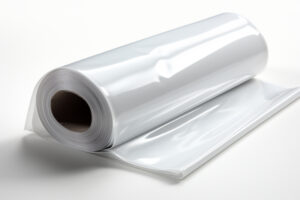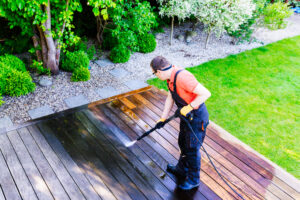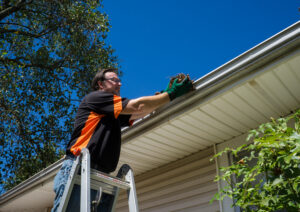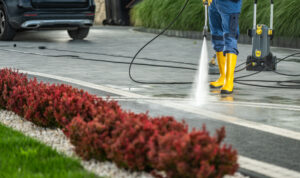Maintaining your home’s exterior is an important part of protecting its structural integrity and improving its overall curb appeal.
One key aspect of ensuring this is the case is power washing the siding. This task can help transform the look of your house and keep it looking its best all year round.
It can also help prevent potential damage caused by dirt, mold, and mildew. Since we have seen the importance of doing this, one question you may have is how often to do it.
This is a good question because you must know the best time frame to ensure your siding stays pristine all year round. This article answers this question by looking at various factors that could influence your decision.
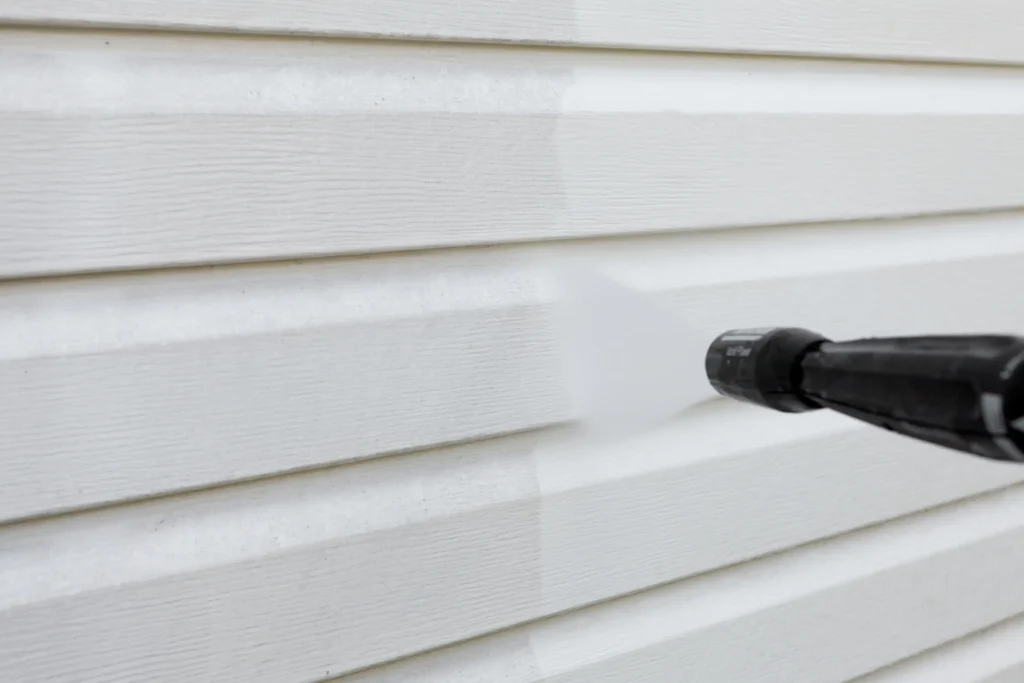
Cleaning the Vinyl Siding
Location
Your location plays a crucial role in helping you decide how often to do it. The reasoning behind this is that homes located in regions with high humidity, frequent rains, or close to large water bodies are more prone to mold, mildew, and algae growth. These organisms can quickly accumulate on your siding. In such a place, you might need to wash more often than if your home was in a location that does not receive a lot of rainfall or does not experience high humidity levels. Another thing to note is that those properties surrounded by trees may experience extra pollen, sap, and organic debris buildup. Also, where pollution levels are much higher, urban settings may necessitate regular cleaning to remove grime and soot. Paying attention to your current location and the conditions experienced can help you maintain clean and well-maintained siding.
Climate
As aforementioned, regions that experience heavy rainfall or high humidity levels create great conditions for algae, lichen, and fungi to thrive on your siding. In contrast, dry climates, especially those that experience dust or sand, can cause another type of buildup because the siding could be coated with a fine layer of particles. In addition to this, extreme seasonal changes like hot summers or cold winters can affect the condition by causing materials to expand and contract, potentially trapping dirt and grime. Regular power washing in response to different climatic conditions comes in handy in helping you to maintain the integrity of your exterior.
Material
The type of material can also significantly affect how often you do it. For instance, vinyl is generally low maintenance. It can go long without washing, mainly because it resists dirt and moisture buildup. Another example is wood, which is more susceptible to mold, mildew, and rot, especially in damp climates. This means that wood requires frequent power washing to preserve its appearance and prevent damage. Although brick and stucco are durable materials, they can develop stains and discoloration from algae and pollutants, necessitating frequent cleaning. In addition, delicate materials like softwood and painted surfaces require careful and less frequent washing to prevent damage.
Condition
If your siding shows visible signs of dirt, stains, or algae growth, then that is a clear indicator that cleaning is quickly required to prevent further buildup and potential damage. You must do regular inspections to help you identify early signs of deterioration, like mold spots, peeling paint, or discoloration. Such issues could create the need for frequent washing to help address them. In addition, if the siding has experienced severe staining or weather-related damage, chances are high that you will need to do more intensive and regular maintenance. This is the only way that you can restore its appearance.
How Often Should the Siding of a House Be Power Washed?
For most homes, doing it once a year is sufficient to keep it clean and well-maintained. However, if you live in high-humidity regions, consider doing it every 6 to 8 months to manage mold, mildew, and debris. In regions with harsh winters, a pre-winter wash might be necessary to remove salt and grime, with an extra clean in mid-year if needed.
Determining how often to do it involves paying attention to various factors such as climate, location, type of material, and the condition of the siding itself. By tailoring your schedule to these factors, you can ensure that your home’s exterior remains in excellent condition at all times.

